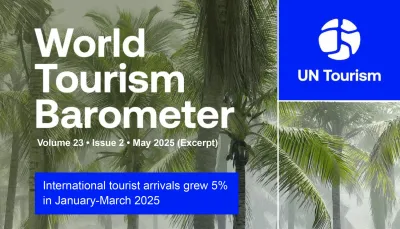European travel trends May 2025
EU tourism recovery strategy
intra-European travel growth
post-pandemic travel Europe
OTA
Tour operator
Inside Europe’s Tourism Comeback: How May Became a Turning Point

European travel trends May 2025
EU tourism recovery strategy
intra-European travel growth
post-pandemic travel Europe
OTA
Tour operator
Europe began 2025 on the defensive. A perfect storm of trade friction, consumer mistrust, and cooling long-haul demand dragged down travel sentiment across the continent. But by May, Europe had engineered one of the most decisive rebounds in recent tourism memory.
The opening months of 2025 were rough for Europe’s travel sector. After the Trump administration introduced a sweeping 10% tariff on all U.S. imports—and hiked rates on 57 countries including EU members—European sentiment took a hit.
While no formal travel ban existed, trade tensions coincided with softening interest in transatlantic travel. Industry insiders cited anecdotal reports of booking slowdowns and a pullback in promotional activity. American hotel chains saw a dip in forward European bookings. Airlines adjusted campaign budgets. U.S. cities slipped in popularity across some EU markets.
The European Commission responded with diplomatic signaling, hinting at a “zero-for-zero” tariff approach for industrial goods. But for the travel sector, perception damage had already begun to redirect demand.
May Shift: The Domestic Pivot
May marked the inflection point. European destinations, tour operators, and hotel groups moved fast to redirect attention inward. Hotel rates in Portugal, Spain, and Italy dropped by as much as 25% in targeted campaigns. The UK led flash sales on package holidays. Booking platforms updated filters to spotlight “local-first” and “no-fly” vacations.
By June, it was working.
In Spain, international arrivals were forecast to top 100 million for the year, according to the WTTC. France, Italy, and Eastern European destinations like Slovenia and Croatia posted double-digit gains in occupancy. Importantly, this wasn’t a return to the old model—it was a reset.
The New Playbook: Place-Making Over Price Wars
Beyond discounting, the rebound was powered by experience design. DMOs and boutique brands collaborated on themed itineraries—regenerative travel in the Alps, wine trails in Central Europe, slow-food coastal escapes. Local artisans were featured in campaigns. “Instead of selling nights, we started selling meaning,” one operator in Andalucía told BAE Ventures.
The result? By June, tourism spend in Europe was projected to hit $838 billion for 2025—an 11% jump over 2024, according to the WTTC. And unlike past rebounds, it was distributed: beyond Paris, beyond Rome, into the regions often sidelined.
Strategic Reflection:
Europe’s fragmented tourism ecosystem—often criticized for inefficiency—proved its value as a flexible, bottom-up recovery engine. While long-haul dependency faltered, regional resilience took center stage.
Still, questions remain. Will the gains hold once the geopolitical climate eases? Can intra-European travel sustain its current volume through summer and beyond?
What 2025 revealed is that Europe’s edge isn’t just heritage or hospitality. It’s adaptability. In a crisis, the continent didn’t just recover—it rerouted, rebranded, and redefined what tourism could look like.



